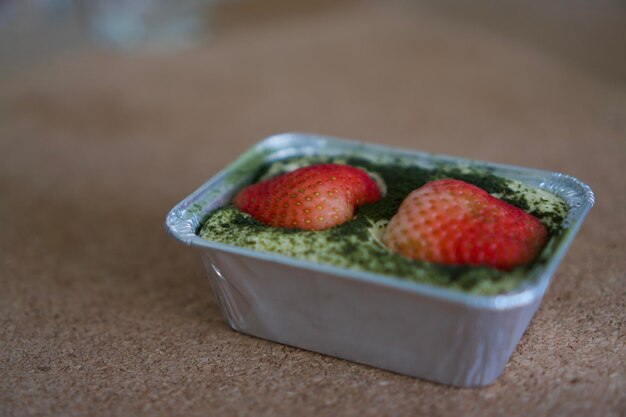How Long Does Spinach Dip Stay Fresh in Your Fridge?
Spinach dip is a crowd-pleaser at parties, family gatherings, and casual get-togethers. Known for its creamy texture and savory flavor, this dip can quickly become a staple in your kitchen. Yet, like all food, it has a shelf life that you need to be aware of to enjoy it safely and at its best. So, how long does spinach dip last in the refrigerator? Let’s dive in to find out, explore related subtopics, and get some practical tips on maximizing the freshness of your spinach dip.
Understanding the Shelf Life of Spinach Dip
What Determines the Shelf Life?
The shelf life of spinach dip depends on several factors, including its ingredients, preparation method, and storage conditions. Typically, homemade spinach dip lasts 3 to 4 days when stored properly in the refrigerator. This can vary depending on the specific recipe, particularly the kinds of dairy used (e.g., sour cream, cream cheese, yogurt). Store-bought versions often include preservatives, which could extend the shelf life but always adhere to the “use by” date on the packaging as a rule of thumb.
Signs Your Dip Is Past Its Prime
Knowing how to identify spinach dip that's gone bad can prevent unpleasant dining experiences and potential health risks. Here are some key signs your spinach dip may no longer be good to eat:
- Unpleasant Odor: Fresh spinach dip should have a mildly tangy aroma due to its dairy content. If the dip develops a sour or rancid smell, it’s past its prime.
- Mold Growth: Any visible mold, even if only on the surface, is a clear sign to discard the dip.
- Texture Changes: A watery separation or a clumpy texture change indicates that the dip may have spoiled.
- Off-Taste: A reliable way to confirm freshness is by taste. If the dip tastes off or tangy beyond normal, it’s best not to consume it.
Extending the Freshness of Your Spinach Dip
Storage Tips
Proper storage is crucial to maintaining the quality of spinach dip. Follow these tips to keep your dip at its best:
- Airtight Containers: Use airtight containers to prevent air exposure that can accelerate spoilage. If you're storing in the original container, ensure it's tightly sealed.
- Cool, Consistent Temperatures: Place the dip in the refrigerator immediately after serving. Avoid leaving it out at room temperature for extended periods.
- Close the Lid Promptly: During serving, keep the lid or cover handy to minimize the dip's exposure to air.
Consider Freezing for Longevity
For those who perhaps whipped up a batch too large, freezing is a practical option. Here’s how to go about it:
- Portion-Controlled Freezing: Divide the dip into smaller portions so you can thaw only what you need.
- Freezer Bags or Containers: Use freezer-safe bags or containers to avoid freezer burn.
- Label and Date: Always label with the date frozen to track its storage time.
While freezing can extend shelf life by 1-2 months, be aware that the texture may slightly alter upon thawing due to the separation of dairy components. Stir well before serving to restore its creamy consistency.
Ingredient Awareness and Its Impact
Dairy Choices
Different dairy products in spinach dip can alter its shelf life. For example:
- Sour Cream and Mayonnaise: Common in many recipes, these ingredients may have shorter freshness periods when homemade but can last longer if store-bought with preservatives.
- Greek Yogurt: Offers a healthier alternative, albeit sometimes with a quicker spoilage rate compared to mayo-based dips.
Spinach and Additives
Fresh versus frozen spinach can also influence longevity. Fresh spinach must be washed and dried thoroughly to prevent early spoilage, while frozen spinach usually provides a longer initial fridge life post-cooking.
- Seasonings: Garlic, lemon juice, and onions can slightly alter the dip's pH but don’t significantly extend its life.
FAQs: Spinach Dip Storage
Q: Can I leave spinach dip out overnight?
A: No, it's not safe to leave spinach dip at room temperature for more than two hours. Doing so increases bacterial growth, leading to foodborne illnesses.
Q: What is the best way to reheat spinach dip?
A: Reheat small portions in a microwave or larger servings in the oven. Stir frequently to ensure even heating, and serve immediately.
Q: Does homemade spinach dip have a shorter shelf life than store-bought?
A: Generally, yes. Store-bought dips often contain preservatives that prolong their shelf life compared to homemade versions.
Q: How can I tell if store-bought spinach dip is still good?
A: Adhere to the “use by” date on the packaging. Also, check for any odors, texture changes, or mold as indicators of spoilage.
Practical Tips for Spinach Dip Lovers
Here's a bullet-point list to summarize key points on storing and enjoying spinach dip:
- 🥶 Refrigeration: Store in the fridge immediately after use.
- ⏳ Time Limit: Consume within 3-4 days for best quality.
- ❄️ Freezing: Optionally freeze for up to 2 months.
- 👃 Sniff Test: Check for unpleasant smells.
- 👀 Visual Check: Discard if you see mold or significant texture change.
- 🥄 Portion Control: Serve in small quantities to avoid excess leftovers.
Final Thoughts
Arming yourself with the right information about storing spinach dip can save you from potential food waste and health risks. With proper storage techniques, an understanding of ingredient impacts, and keen observation of freshness signs, you can enjoy your spinach dip in all its creamy, savory glory for as long as possible. Whether you're planning for a party or enjoying a Friday night at home, keep these tips handy to make the most of this delicious dip.
Remember, while spinach dip is a delightful treat, its perishable nature means a little extra attention goes a long way in ensuring your safety and satisfaction. Enjoy the flavors responsibly, and don’t hesitate to freeze or properly dispose of the dip when necessary. Here’s to tasty, safe, and informed snacking!
